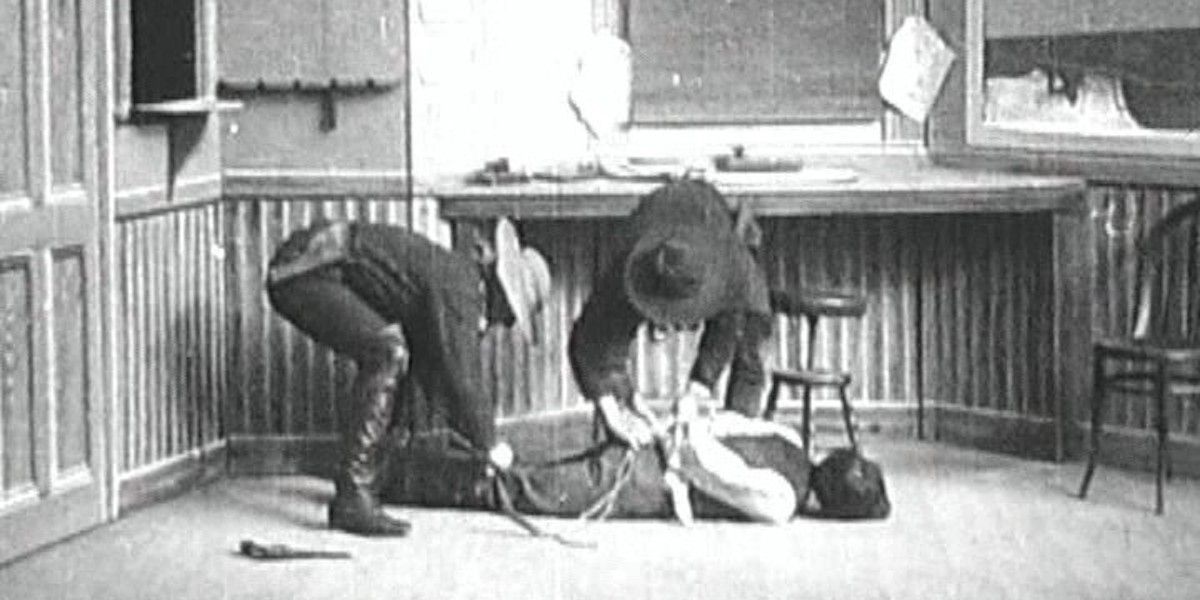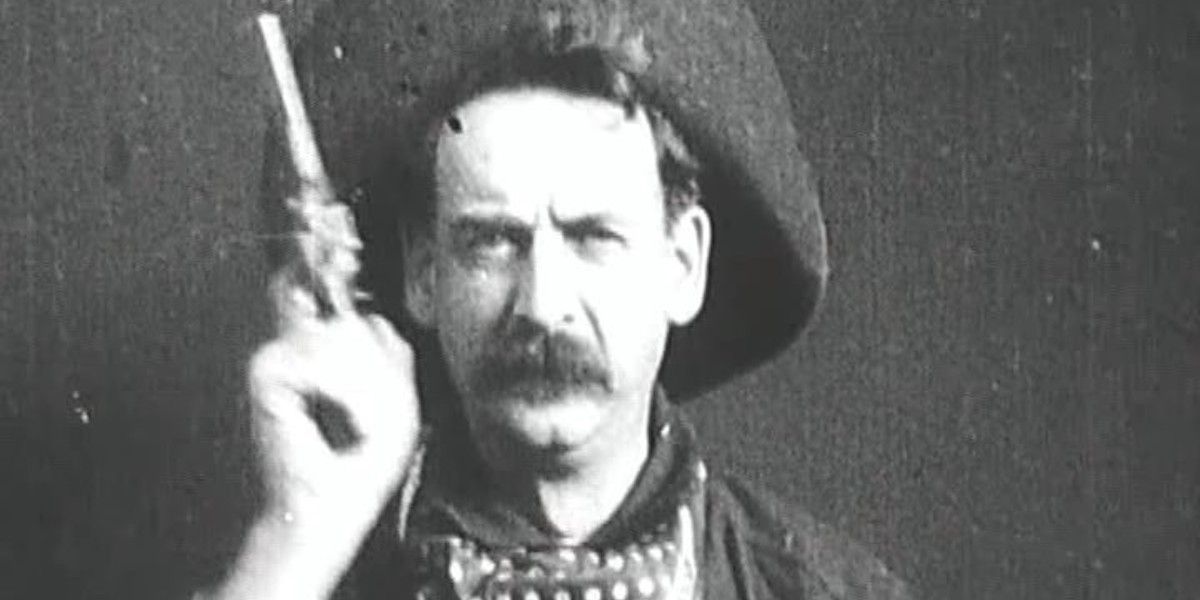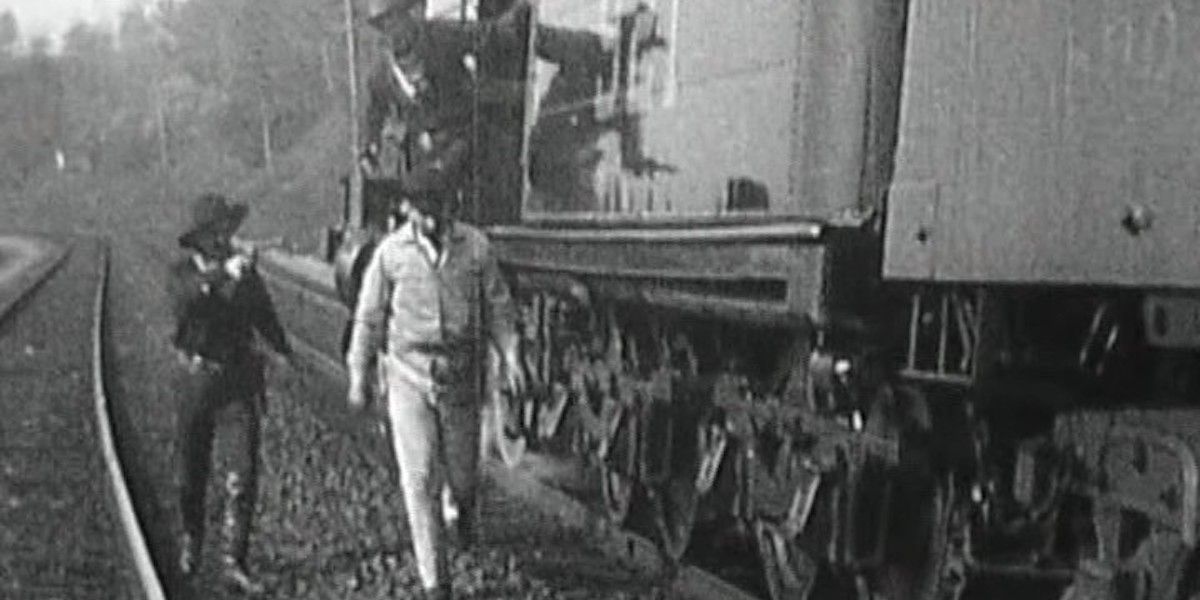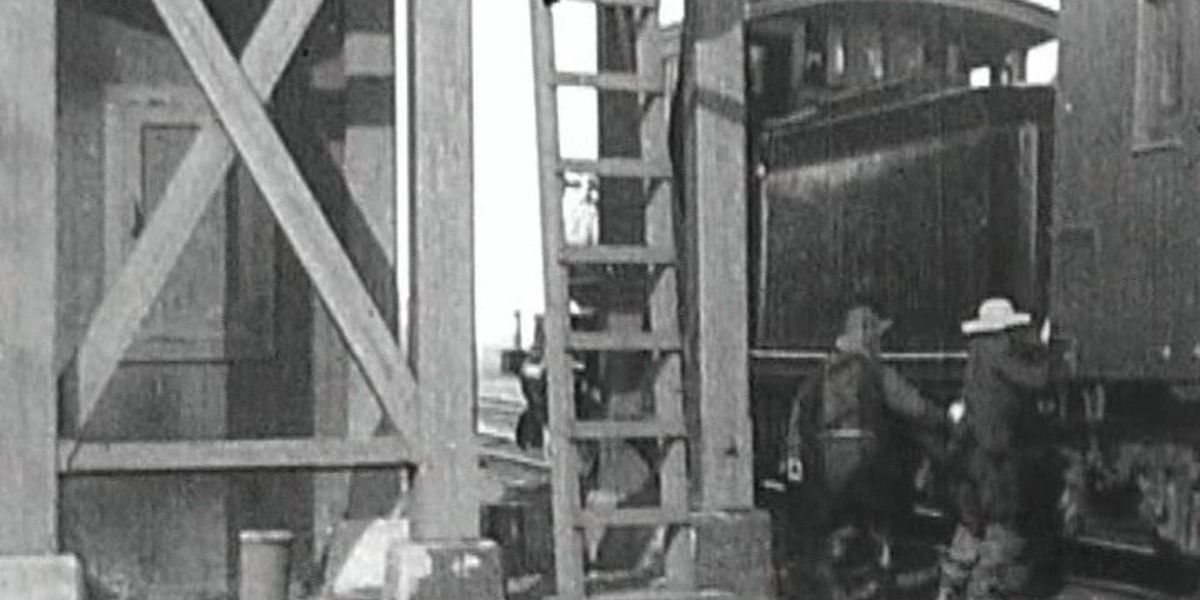As one of the most influential films of all time, The Great Train Robbery is truly representative of the word “groundbreaking”. It is a primitive image of filmmaking under today’s lens, but it was a phenomenon during its heyday. While Edwin S. Porter’s classic from 1903 is widely considered to be the first Western film for most, there seems to be some debate regarding the breadth of its influence. Some contentious declarations from film scholars even dictate that this picture had nearly no connection to the evolution of the genre. Whatever the case may be regarding the authenticity of those claims, this does not dissipate its reputation as one of the foundations of the moving pictures.
What Is ‘The Great Train Robbery’ About?
The Great Train Robbery tells the story of a group of bandits who, as the title dictates, look to rob a train filled with valuables. They knock out the telegraph operator at the station and board the train when it stops to fill its tender with water. A gunfight ensues inside a cabin, and they pick apart the chests and cabinets. The group then proceeds to the front of the train and takes control of the locomotive. The locomotive stops, and they ask the passengers to alight, taking all of their money and prized possessions.
One of the passengers tries to escape but is shot dead. After they take everything from the passengers, they fire off shots causing them to disperse, and the bandits escape to their horses. The daughter of the telegraph operator discovers her father’s predicament. Upon being set free, the telegraph operator rushes to a hall to inform a group of men that the train has been robbed. They chase the bandits through the woods, eventually wiping them out, and recovering the loot. The heist movie ends with the immortal image of the film’s outlaw leader heavy firing of his revolver directly into the camera.
How Did Edwin S. Porter Make ‘The Great Train Robbery’?
Edwin S. Porter was himself a visionary in terms of technical advancements. Porter had made cameras, projectors, and the like, but a fire ravaged his studio, and he had to start over. To recover from this disaster, he accepted a commission project from the Edison Manufacturing Company, eventually becoming the studio’s cameraman. One should note that being a cameraman during this time was virtually the same as being a director in today’s day and age. When he discovered the advancements presented by people like Georges Méliès, he was inspired to move towards films that embodied a more structured narrative.
His films such as 1902’s Jack and the Beanstalk and Life of an American Fireman, among others, were evidence of this working philosophy. The success of these films pushed Porter’s name into the limelight as one of America’s up-and-coming filmmakers in one of the country’s most significant film studios. In 1903, Porter looked to further enhance his reputation, and the medium of cinema, to newer heights through the lens of the Western genre.
Is ‘The Great Train Robbery’ the First Western?
When discussing Porter’s inspirations for this upcoming film, it immediately brings into question the claim that The Great Train Robbery was virtually the first Western. The existence of films such as Kidnapping by Indians in 1899, where the tropes of the genre are present, completely dismantles this argument. Several short films in 1894 produced by the Edison studios, such as Annie Oakley, Bucking Broncho, Buffalo Bill, and Lasso Thrower had given audiences their first experience of the Westerns. Porter had also notably drawn from a play by Scott Marble of the same name and harkened back to the narrative styles of films such as A Daring Daylight Burglary. It is not the first Western in the world, not by a long shot. However, it still bears great importance as a hallmark of American, and World cinema.
Mistaken as this claim may be, what can be considered its influence is its existence as the first dramatically creative American film, among others. The Great Train Robbery’s significance is in its blending of pure cinematic image and narrative storytelling. It may not be the first Western, but it is the first Western to bear a recognizable form that epitomized the genre. Essentially, it was undoubtedly the first to feature the conventions of a modern Western; a crime leading to a chase, which develops into a showdown, and ending in achieving justice. Its other images, which include the now clichéd heavy firing bullets on a victim’s feet forcing him to dance, are also greatly influential.
How Has ‘The Great Train Robbery’ Influenced Modern Movies?
For its time, The Great Train Robbery was a sophisticated and groundbreaking film. Critics and scholars herald it as Porter’s most important picture, and his works such as The Count of Monte Cristo, paled in comparison to his seminal film. Its influence was so wide-reaching that Pop culture churned out countless remakes in the years after. The Lubin Company of Philadelphia produced a shot-for-shot remake the year after. The Edison company, banking on the success of its original, made a parody called The Little Train Robbery, which literally uses a little locomotive and an all-child cast to recreate the movie. History would also aid in the recollection of the classic: An actual heist in 1963, where a train moving from Glasgow to London was ransacked by a group of men who took about £55 Million in today’s currency, was branded as the real-life great train robbery. In turn, this produced a multitude of movies and television shows spanning decades, essentially tipping its hat to Edwin S. Porter’s original creation.
Aside from this, contemporary films have also paid homage to The Great Train Robbery, in particular, the ending scene where a bandit shoots directly into the camera. Films and shows from Spellbound, Melody Time, to Goodfellas, have all had versions of this culminating scene used in varying contexts. It stands as a testament to the vampirism that the medium possesses. All prospective products of the dream factory, so to speak, stand on the shoulders that came before them, and Edwin S. Porter’s pioneering Western is one of the very first to push the boundaries.




























